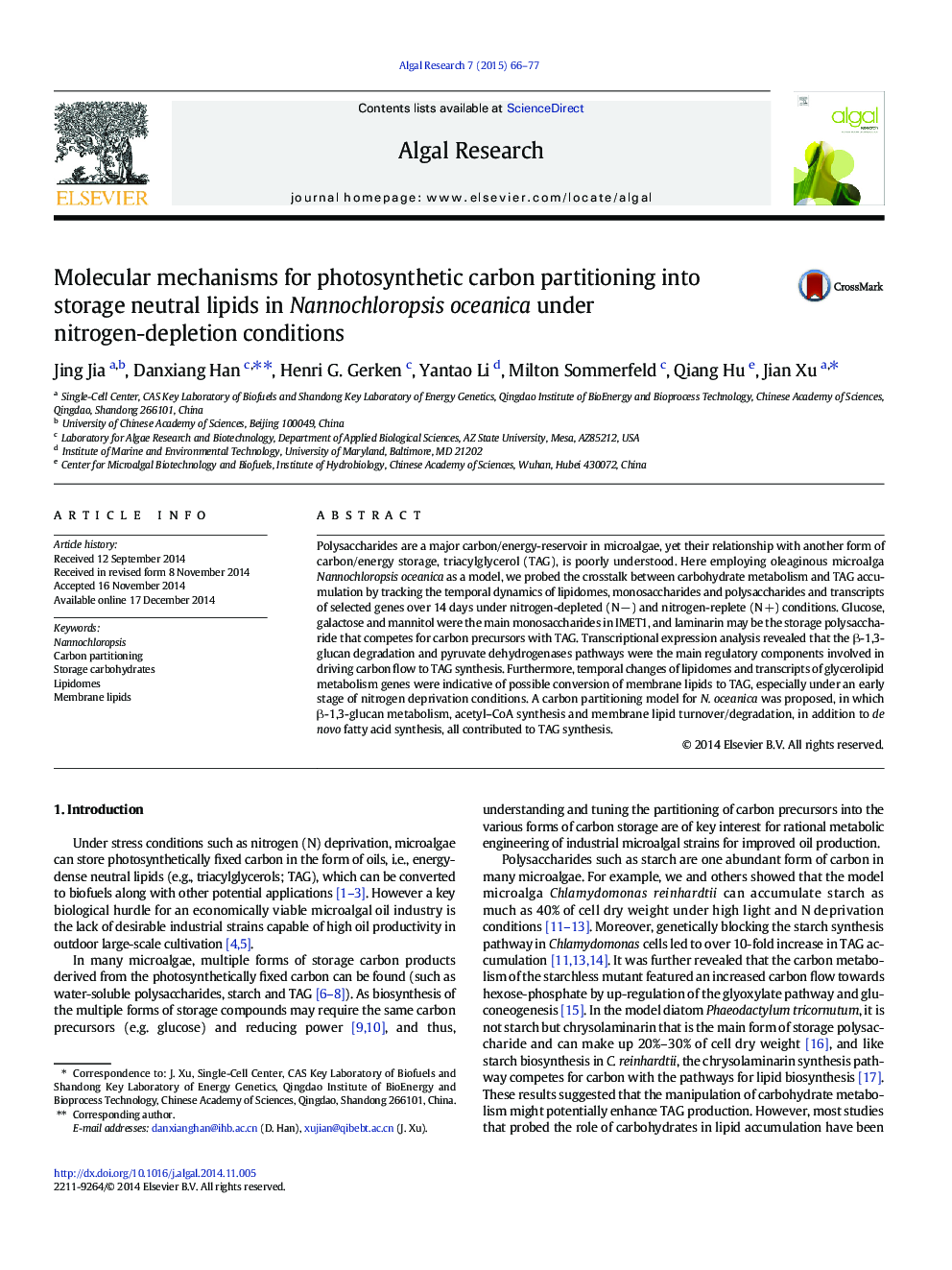| Article ID | Journal | Published Year | Pages | File Type |
|---|---|---|---|---|
| 1742053 | Algal Research | 2015 | 12 Pages |
•Glucose, galactose and mannitol are the main mono-saccharides in IMET1.•Laminarin, the possible storage polysaccharide, competes for carbon precursors with TAG.•Beta-1,3-glucan degradation and PDH pathways drive carbon flow to TAG synthesis.•Membrane lipids are possibly converted to TAG at an early stage under N− conditions.•A model of photosynthetic carbon partitioning towards TAG was proposed.
Polysaccharides are a major carbon/energy-reservoir in microalgae, yet their relationship with another form of carbon/energy storage, triacylglycerol (TAG), is poorly understood. Here employing oleaginous microalga Nannochloropsis oceanica as a model, we probed the crosstalk between carbohydrate metabolism and TAG accumulation by tracking the temporal dynamics of lipidomes, monosaccharides and polysaccharides and transcripts of selected genes over 14 days under nitrogen-depleted (N −) and nitrogen-replete (N +) conditions. Glucose, galactose and mannitol were the main monosaccharides in IMET1, and laminarin may be the storage polysaccharide that competes for carbon precursors with TAG. Transcriptional expression analysis revealed that the β-1,3-glucan degradation and pyruvate dehydrogenases pathways were the main regulatory components involved in driving carbon flow to TAG synthesis. Furthermore, temporal changes of lipidomes and transcripts of glycerolipid metabolism genes were indicative of possible conversion of membrane lipids to TAG, especially under an early stage of nitrogen deprivation conditions. A carbon partitioning model for N. oceanica was proposed, in which β-1,3-glucan metabolism, acetyl–CoA synthesis and membrane lipid turnover/degradation, in addition to de novo fatty acid synthesis, all contributed to TAG synthesis.
